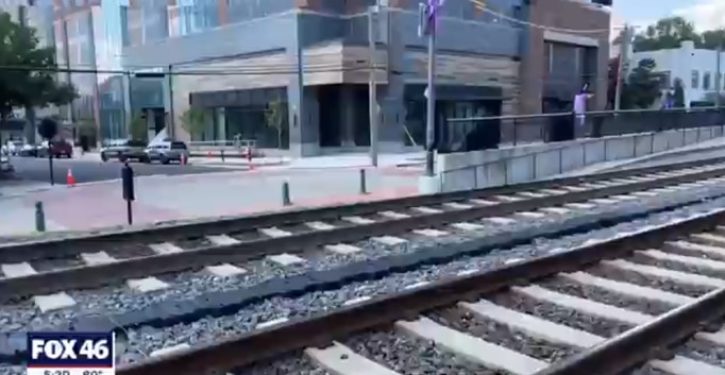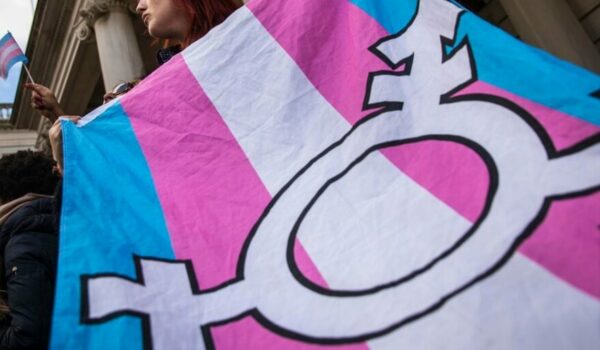
Washington’s Union Station is operating at less than half of its existing capacity. But the Biden administration wants to expand it at a cost of $8.8 billion, even though the rail lines that service it have lost up to 75% of their pre-pandemic ridership.
Reason Magazine reports:
This past week, the Federal Railroad Administration released a draft environmental study of the planned massive $8.8 billion redevelopment of Washington, D.C.’s Union Station, reported The Washington Post. The plan includes new train platforms, a bus terminal, shops, restaurants, and more to be built by 2040. Passenger capacity would be tripled.
The Union Station Redevelopment Corporation, which operates the station, and Amtrak, which owns the platforms and tracks, are responsible for the redevelopment project.
The expansion has the enthusiastic support of local congressional leaders. The bipartisan infrastructure law signed by President Joe Biden in November 2021 greatly expanded the amount of money available for public transit and commuter rail projects.
All the money and resources are there. What’s missing are the riders for all the added capacity.
All of the commuter and intercity rail services that use Union Station are in deep, prolonged ridership depressions that appear to be outliving the pandemic’s suppressive effects on other forms of social and economic activity.
Union Station is serviced by two regional commuter rail services, the Maryland Area Regional Commuter (MARC) and the Virginia Railway Express (VRE), along with Amtrak and the local Metro rail service run by the Washington Metropolitan Area Transit Authority (WMATA).
WMATA’s average daily boardings at Union Station are up from the worst of the pandemic, but still only about 40 percent of pre-pandemic levels. Overall rail ridership on WMATA is at 51 percent of pre-pandemic levels.
It’s the same or even worse for the commuter rail services. As of December 2022, VRE ridership had climbed to a little over a quarter of its 2019 levels. Its average rail car is only about 30 to 40 percent full on a weekday. MARC carried 265,107 people in February 2023. That’s a third of the number of people it carried just before the pandemic in February 2020….Nationally, a major factor keeping rail ridership in a post-pandemic rut is the rise of remote work.
This is particularly true for D.C.’s legions of laptop workers. A third of the D.C.-area population works remotely…That’s a 400 percent increase in remote workers compared to pre-pandemic levels…Fewer people commuting has unsurprisingly been bad news for commuter rail services, particularly those like the VRE and MARC, which catered to long-distance traveling “supercommuters.”…high-income, transit-riding supercommuters have all but disappeared post-pandemic thanks to remote work. Yet…the federal government is looking to spend billions on new infrastructure for them in the form of the Union Station project.
The trillion dollar infrastructure bill Biden signed into law in November 2021 is harming the environment and transportation efficiency in ways discussed in an editorial in liberal-leaning Bloomberg News. The infrastructure bill included $66 billion for Amtrak — $4,000 per Amtrak user — and it is expected to ultimately create 39 new little-used Amtrak routes. As Bloomberg’s editors explain:
Expanding passenger rail doesn’t just burden the federal budget. It could also harm the broader economy. On most of its routes, Amtrak pays private freight carriers for access to their tracks. Because passenger trains are (by law) given preference on these routes, they’re likely to slow down the nation’s freight network and hence raise shipping costs…
You might still argue that passenger-rail expansion is necessary on environmental grounds. But this, too, fails a cost-benefit test. Displacing freight rail means more cargo will likely be carried by trucks, which produce perhaps 10 times more carbon per ton-mile. Moreover, Amtrak’s trains outside of the northeast are diesels, which emit about 167 grams of carbon dioxide per passenger-mile…..the infrastructure bill almost seems designed to maximize inefficiency. It specifically prohibits Amtrak from reducing service on unprofitable rural routes. It requires human ticket agents at every station that serves more than 40 passengers a day….
The infrastructure bill will increase the national debt, while wasting money on inefficient modes of transportation, and slowing down speeds on some roads, in the name of safety or community cohesion.
“About half of the transportation dollars in the bill are dedicated to Amtrak and urban transit, modes of transportation that carry less than 1 percent of passenger travel and no freight. While the other half appears to be dedicated to highways, much of that will be spent on projects that will reduce, not maintain or increase, roadway capacities,” notes transportation expert Randal O’Toole. That includes money “to calm traffic and reduce vehicle speeds” or otherwise “slow or stop a motor vehicle.”
The infrastructure package contains “poison pills.” As an economist notes, one “poison pill” in the bill
is the so-called highway safety improvement program. It would be more accurately titled the highway congestion increasing program as it provides billions of dollars in funding for projects aimed at slowing traffic and increasing congestion. This includes money for “medians, pedestrian crossing islands, protected bike lanes, and protected intersection features” and other projects “to calm traffic and reduce vehicle speeds” or otherwise “slow or stop a motor vehicle.”
Another potential “poison pill” is the infrastructure bill’s “reconnecting communities” program. Greater “community connectivity” can mean more intersections, more stops, and slower traffic for motorists passing through a community. The concept “sets a dangerous precedent that puts some vague definition of ‘community’ above the clear benefits of mobility.”
Reason Magazine reported that the national debt and the cost of transportation projects will rise as a result of the infrastructure package:
The CBO projects that the bill will add about $256 billion to the federal budget deficit over 10 years. Actually, that number is likely to be closer to $400 billion because the infrastructure package includes a number of dubious offsets, particularly in how it proposes to reallocate unused funds appropriated in various COVID-19 emergency spending bills.
The bill is also larded up with provisions that will make infrastructure projects more costly for taxpayers….Like the Davis-Bacon Act, which requires that most workers on federally subsidized building projects are paid the local “prevailing wage” negotiated by unions even if the workers themselves are not unionized—and only about 13 percent of construction workers are part of a union. The Davis-Bacon Act rules can increase the costs of infrastructure projects by as much as 20 percent…NEPA reviews take more than four years on average, and they are frequently used as tools to block development for reasons that often have little to do with the environment. President Donald Trump had implemented some minor NEPA reforms before leaving office, but the Biden administration has already undone them. “Biden’s proposed NEPA changes only ensure that more federal money will be spent on red tape,” Reason’s Christian Britschgi explained last month.
While inflating the cost of actual infrastructure projects, the bill also promises to waste federal tax dollars on boondoggles like rural broadband internet. To justify $42 billion in subsidies for building out unnecessary fiber-optic lines, the bill cleverly changes the definition of “broadband” to make it look like fewer American homes have access to high-speed internet. Other provisions in the proposal virtually guarantee that those subsidies flow to publicly owned networks rather than private ones. This seems to fulfill an ideological goal—making internet access more like a public utility rather than a private service.
In addition to the $1.2 trillion infrastructure package proposed by Congress, Biden had also proposed a larger $2.5 trillion infrastructure plan. That plan would subsidize obsolete technologies, and reduce private investment in infrastructure and other fixed assets by $1 trillion. It would also harm private infrastructure such as power stations, freight railways, and pipelines. And since it relies on accounting gimmicks, Biden’s infrastructure plan would also increase the national debt.



